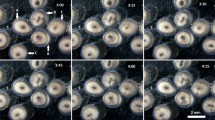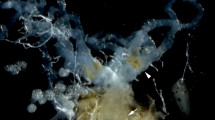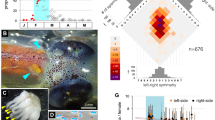Abstract
IN a recent communication1, I recorded the occurrence of apomictic parthenogenesis combined with polyploidy in a few species of Melanoides. One of these species, Melanoides tuberculatus, includes a diploid race with 2n = 32 chromosomes and a polyploid race with 90–94 chromosomes, which thus appears to be more or less at the hexaploid level when compared to the former. Both these races are parthenogenetic, but in the latter there occur exceptional males which are sterile, constituting about 3 per cent of the population. The males show evidence of structural and numerical hybridity in the occurrence of bridge and fragment in the meiotic divisions and in the presence of non-pairing univalents with irregular distribution in the first meiotic metaphase and anaphase.
This is a preview of subscription content, access via your institution
Access options
Subscribe to this journal
Receive 51 print issues and online access
$199.00 per year
only $3.90 per issue
Buy this article
- Purchase on Springer Link
- Instant access to full article PDF
Prices may be subject to local taxes which are calculated during checkout
Similar content being viewed by others
References
Jacob, J., Curr. Sci., 23, 56 (1954).
Kostoff, D., Genetica, 21, 285 (1939).
Darlington, C. D., “Recent Advances in Cytology” (2nd edit., 1937).
Suomalainen E., Hereditas, 26, 51 (1940).
Author information
Authors and Affiliations
Rights and permissions
About this article
Cite this article
JACOB, J. Allopolyploidy in the Melaniid Snails. Nature 174, 1061–1062 (1954). https://doi.org/10.1038/1741061a0
Issue Date:
DOI: https://doi.org/10.1038/1741061a0
Comments
By submitting a comment you agree to abide by our Terms and Community Guidelines. If you find something abusive or that does not comply with our terms or guidelines please flag it as inappropriate.



